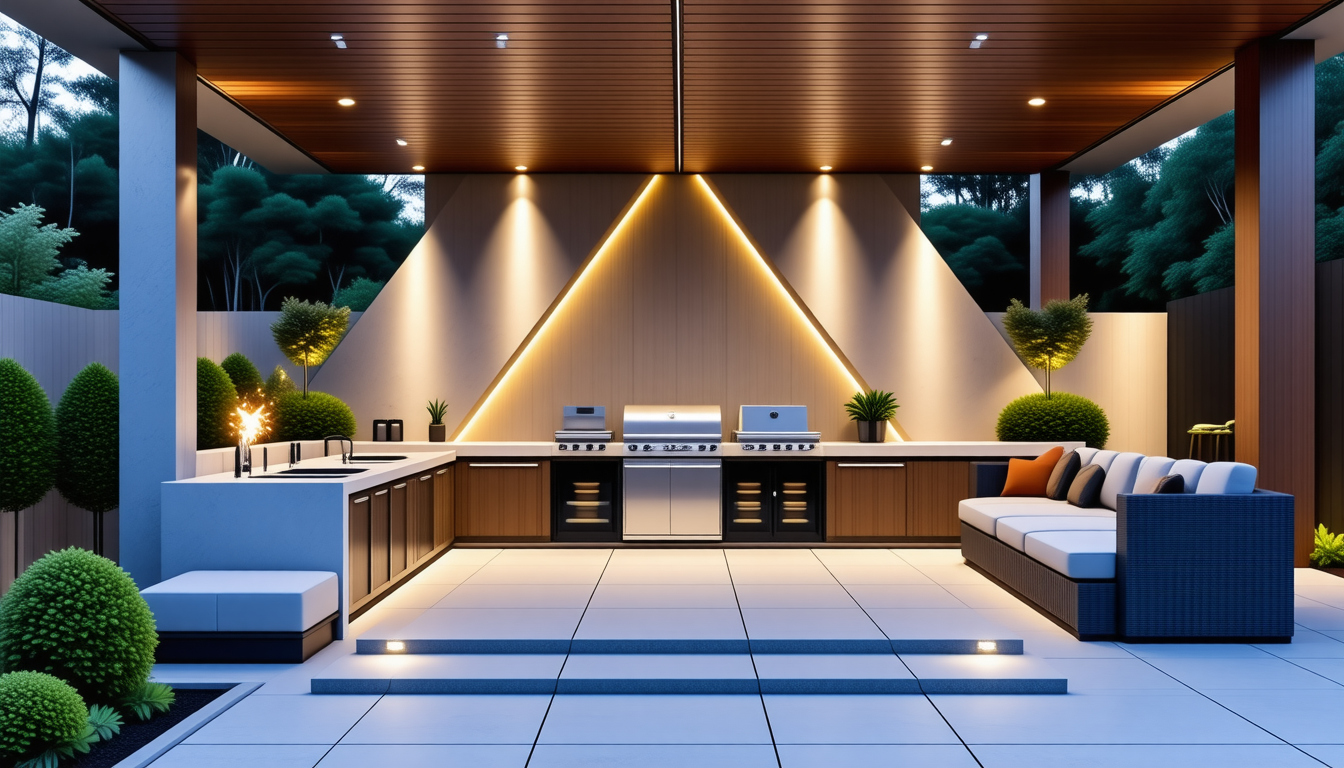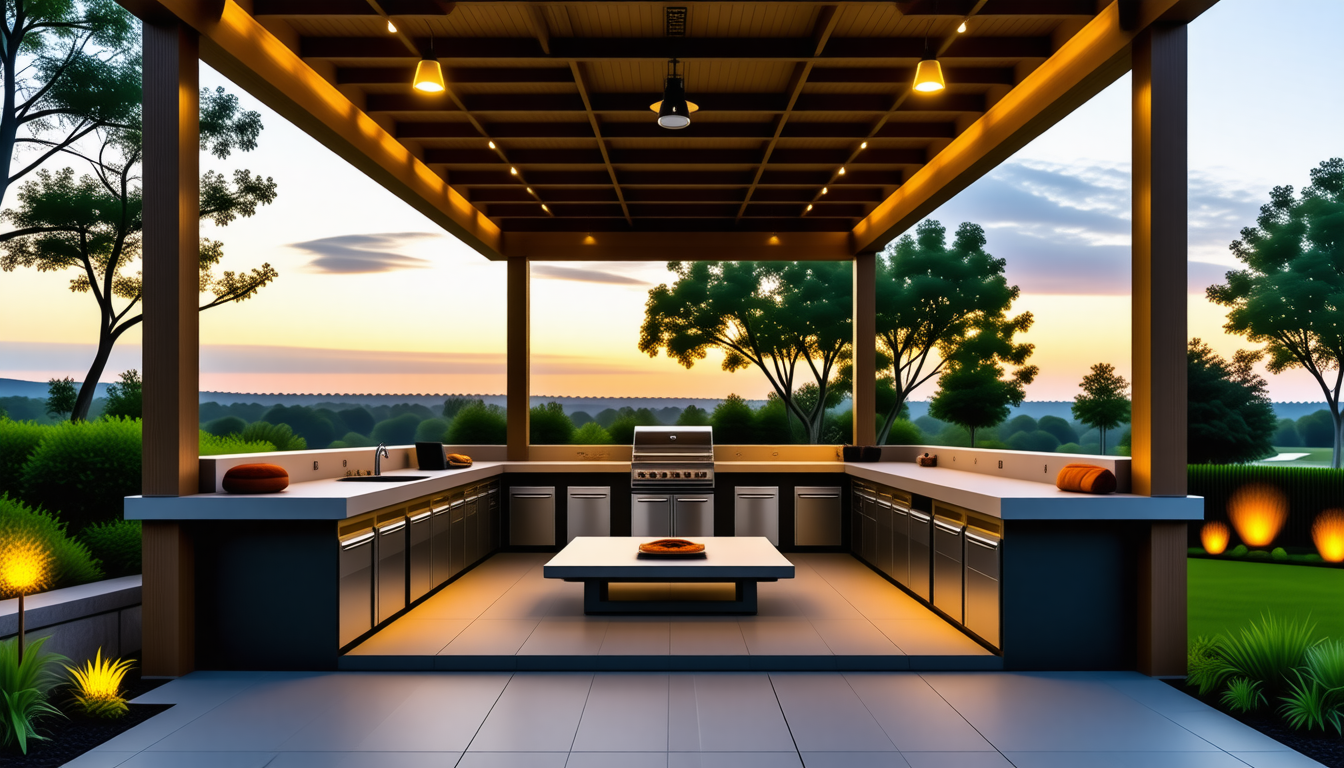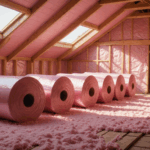When embarking on the journey to create an outdoor kitchen that you can enjoy all year round, one of the most critical elements to consider is the layout and space planning. Effective planning ensures that your outdoor kitchen not only looks good but also functions efficiently, facilitating both casual evenings with family and festive gatherings with friends.
Firstly, it’s essential to evaluate and utilize your available space wisely. Whether your backyard is sprawling or limited, mapping out the dimensions will help in deciding the size and type of appliances and features you can incorporate. Consider the natural flow of the area, and ensure there is adequate space for cooking, dining, and relaxing, without overcrowding. Utilize zones within your design—separating the cooking area from the eating and lounging areas will streamline movements and reduce congestion, making the space comfortable and inviting.
Additionally, focusing on functionality and accessibility is vital. Apply the work triangle principle—commonly used in indoor kitchen design—where the grill, sink, and refrigerator form a functional triangle for efficient movement. This approach optimizes tasks and enhances workflow, reducing the time spent running back and forth, thus making the cooking experience enjoyable and less cumbersome.
Inclusion of pathways is another critical aspect of space planning. Design intuitive paths that allow seamless movement from your home to the outdoor kitchen, ensuring that supplies and ingredients can be transported with ease. Pathways should be wide enough for guests to mingle without disrupting the cook’s workflow, especially during backyard upgrades or home improvement additions that draw more guests.
Moreover, consider incorporating a mix of fixed and flexible seating arrangements. Fixed benches around the perimeter of your kitchen can provide ample seating without obstructing the main cooking area, while movable chairs and tables can be arranged to suit different occasions and group sizes. Think about how you will store these pieces when not in use if you have limited space.
Lighting plays a pivotal role in both the functionality and ambiance of your outdoor kitchen, especially during evening and nighttime use. Strategically place lights to illuminate the cooking area and dining zone, as well as pathways to ensure safety. Make use of ambient lighting for dining areas to create a warm, inviting atmosphere that enhances the overall outdoor dining experience.
Consider your area’s climate and any geographical features that might impact the layout. For instance, in windy regions, you may want to position your grill or cooking appliances away from prevailing winds to prevent smoke and odor disturbances. Conversely, shaded areas might need to be utilized in particularly sunny climates to ensure comfort during warm, sunny days.
| Layout Component | Considerations |
| Cooking Zone | Place appliances in a triangular layout; consider wind direction |
| Dining Area | Source flexible seating; ensure shaded or lit areas for comfort |
| Paths | Ensure accessibility; wide enough for movement |
| Lighting | Focus on task, ambient, and safety lighting |
By thoughtfully considering these layout and space planning strategies, you can significantly enhance the practicality and pleasure of your outdoor kitchen, turning it into a year-round retreat and a valuable aspect of your home improvement repertoire.
Choosing durable materials
To ensure that your outdoor kitchen stands the test of time and aligns seamlessly with your home improvement ambitions, selecting durable materials is crucial. Given the exposure to various weather conditions, materials should not only contribute to the aesthetic appeal but also offer resilience and longevity.
- Assess the Climate Conditions
- Analyze the typical weather patterns your region experiences throughout the year. Consider factors like humidity, temperature fluctuations, rainfall, and sun exposure.
- For areas with high humidity or frequent rain, prioritize materials that can resist water damage, such as stainless steel, which offers excellent resistance to corrosion and rust.
- In regions with strong sun exposure, choose materials that are UV-resistant to prevent fading and structural damage over time, like certain outdoor-rated composite materials.
- Select Weather-Resilient Countertops
- Opt for materials like granite, which is highly durable and capable of withstanding harsh weather without significant warping or cracking.
- Concrete is another viable option, offering customizable aesthetics and excellent resistance to outdoor elements once properly sealed.
- Avoid materials that might expand and contract excessively with temperature fluctuations, such as certain types of natural stone that can crack under stress.
- Choose Long-Lasting Flooring Solutions
- Pave the outdoor kitchen area with slip-resistant tiles or natural stones like travertine, which not only provide a sturdy base but also enhance safety during wet conditions.
- For a warmer, rustic feel, consider using treated wood decking that resists rot and insect damage, although it may require regular sealing to extend its life.
- Utilize Durable Cabinetry
- Install stainless steel cabinetry, known for its robust nature and ability to withstand the elements without degradation. Powder-coated finishes add extra resistance.
- Alternatively, polymer cabinets are designed specifically for outdoor use, offering a water-resistant solution that mimics the look of traditional wood cabinetry.
- Invest in Quality Finishes and Fixtures
- Select fixtures made from materials such as brass or stainless steel to prevent rusting and tarnishing, ensuring they remain functional and attractive over time.
- When looking into finishes, choose protective coatings for metals that guard against environmental wear, extending the lifespan of these essential components.
By carefully selecting durable materials for your outdoor kitchen, you’ll build a robust entertainment space that endures the test of time and complements your backyard upgrades. The durability of your materials is a foundational aspect of any home improvement project, ensuring your kitchen remains a cherished part of your outdoor living area for years to come.
Weatherproofing and insulation
Creating an outdoor kitchen for year-round use requires careful attention to weatherproofing and insulation. By focusing on these essential elements, you can ensure your outdoor kitchen stays comfortable and functional regardless of seasonal changes or adverse weather conditions. This not only enhances your outdoor living experience but also adds value to your home improvement project.
One of the primary considerations is protecting your outdoor kitchen from the elements. Employing effective weatherproofing techniques will safeguard it against rain, wind, snow, and extreme temperatures, which are all common challenges in an outdoor setting. Waterproof coverings and sealed cabinetry are vital in preventing water damage. These features protect against the potential for mold and mildew, especially after heavy rain, keeping your kitchen hygienic and serviceable.
Enclosing your outdoor kitchen partially with high-quality, transparent storm screens or shutters can serve a dual purpose—sheltering it from rain or strong winds while maintaining visibility of your backyard landscape. When operational, these barriers are relatively unobtrusive and can be adjusted to suit the weather, making them a versatile addition to any backyard upgrade.
Effective insulation extends the usability of your outdoor kitchen into the colder months, keeping it warm and cozy. Look for insulation solutions that can withstand significant temperature variations without degradation. Thompson and Sons Insulation Services, for instance, recommend using weather-resistant insulative panels for walls and ceilings that prevent heat loss and help maintain a stable internal temperature, regardless of the chill outside.
Furthermore, choosing insulating materials for your flooring is critical. Interlocking outdoor tiles combined with an underfloor heating system can be an excellent choice, providing warmth from the ground up and ensuring your space remains inviting even during cooler seasons. This strategy not only enhances the comfort of your outdoor kitchen but also contributes significantly to its energy efficiency, a key factor in home improvement endeavors aimed at sustainability.
Another important factor is maintaining equipment durability. Use appliance covers that resist moisture and high-temperature fluctuations to protect your investment from weather-induced wear and tear. Incorporating built-in vents within your design structure will facilitate air circulation, reducing condensation buildup that can affect both appliances and countertops.
Lighting is also an aspect where weatherproofing plays a role. Ensure that all electrical installations used in your outdoor kitchen are specified for outdoor use and are therefore resilient to damp conditions. This not only preserves the infrastructure but also ensures safety, safeguarding against accidents caused by moisture-exposed wiring.
Ultimately, a robust outdoor kitchen design takes these weatherproofing and insulation strategies into account, ensuring that the space remains functional and charming throughout the year. These considerations form a protective shell around your culinary oasis, preserving the appeal and functionality that make your backyard a centerpiece for entertainment and relaxation, year-round.
Incorporating heating and cooling elements
An integral part of maximizing your outdoor kitchen’s usability throughout the year is the incorporation of appropriate heating and cooling elements. By carefully selecting these components, you’ll be able to maintain a comfortable atmosphere regardless of the season or the varying weather conditions. This consideration not only elevates your outdoor living experience but also adds significant value to your home improvement initiatives.
To combat the chill of autumn and winter, installing patio heaters is a wise choice. These can come in various styles including free-standing, wall-mounted, and tabletop models. When selecting heaters, prioritize those with efficient energy usage and quiet operation to maintain a pleasant outdoor ambiance. Gas heaters are a popular option due to their warmth and cost-effectiveness. However, if you’re looking for a more eco-friendly alternative, consider electric infrared heaters, which provide instant heat without warming the air around them excessively.
Fire pits or outdoor fireplaces can serve as both a heating source and a focal point in your backyard upgrade. Beyond emitting warmth, they create a cozy, inviting atmosphere that encourages gatherings even on colder nights. Ensure that your fire feature is strategically placed and properly vented, considering safety regulations and local codes in your area.
For the sizzling days of summer, ceiling fans equipped for outdoor use can be a game-changer, promoting airflow and mitigating lingering cooking odors. Choose models with weather-resistant finishes and features that can withstand prolonged exposure to the elements. In addition to fans, installing misting systems can provide a refreshing burst of coolness, transforming your patio into a haven during heat waves.
When selecting heating and cooling elements, think about incorporating technology advances. Smart control systems allow you to remotely operate heaters, fans, and misters, offering ultimate convenience and energy efficiency. These systems can be integrated with your smartphone or home automation setups, allowing you to set conditions to adapt to weather changes instantaneously.
As you plan your backyard upgrades, consider the aesthetic integration of heating and cooling units within your outdoor kitchen design. Heaters, fans, and misting systems should blend seamlessly with your kitchen’s style, ensuring they don’t detract from your space’s overall visual appeal. Use enclosures or built-in housings to conceal units when not in use, maintaining the sleek appearance of your outdoor area.
By thoughtfully incorporating these heating and cooling elements, your outdoor kitchen transforms into a versatile and comfortable retreat. Whether you’re hosting a summer barbecue or a winter holiday gathering, these elements ensure that your space remains enjoyable year-round. This strategic enhancement not only boosts the functionality of your backyard but also highlights your commitment to comprehensive home improvement, ensuring your outdoor kitchen continues to be a cherished space for entertainment, relaxation, and culinary delight.
Selecting versatile appliances and features
When designing an outdoor kitchen for continuous enjoyment throughout the year, choosing versatile appliances and features is imperative to ensure flexibility and accommodate a wide range of culinary activities. Consider investing in multi-functional appliances that can adapt to various cooking styles and occasions. For instance, a grill with interchangeable cooking surfaces can allow for grilling, smoking, or even baking, maximizing its utility during both casual family dinners and festive gatherings.
A built-in grill is often the centerpiece of any outdoor kitchen, so selecting one with a combination of gas, charcoal, and smoker capabilities can offer diverse cooking options and enhance culinary creativity. Complementing the grill, a wood-fired pizza oven can not only serve for making delicious pizzas but also bake bread and roast vegetables, expanding the outdoor kitchen’s repertoire beyond traditional barbecue fare.
Incorporating storage options that support functionality is also crucial. Consider weatherproof cabinets and shelving systems that can keep utensils, dishware, and pantry items organized and within reach. Include modular storage that can be adjusted or expanded as needed, depending on the scale of your outdoor events or if new equipment is added over time.
Adding flexible refrigeration and beverage centers can significantly elevate the entertainment value of your space. Compact refrigerators or wine coolers incorporated directly into the kitchen layout can provide convenient access to chilled necessities, from beverages to ingredients, without numerous trips indoors. Consider dual-function models that integrate a refrigerator with a freezer section for storing a diverse range of items efficiently.
To further enhance practicality, implement a combination of fixed and mobile appliances. A movable prep station can add convenience and adaptability, allowing you to adjust the workspace layout based on specific needs or guest numbers. Additionally, a rolling bar cart stocked with essential tools and supplies can streamline drink service and cater to various preferences, making entertaining seamless.
Finally, technology-forward features can turn your outdoor kitchen into a cutting-edge retreat. Smart technology integration, such as Wi-Fi-enabled grills and ovens, can offer precise control, even from a distance, letting you monitor cooking progress while engaging with guests. These tech innovations not only improve cooking efficiency but also exemplify a forward-thinking approach to home improvement projects.
By selecting appliances and features that cater to a broad range of functions, your outdoor kitchen will transform into a dynamic space, capable of accommodating everything from intimate dinners to large social events. These thoughtful inclusions ensure the kitchen remains a pivotal part of your backyard upgrades, reinforcing its value as a well-utilized and much-loved aspect of home improvement.
In conclusion, designing an outdoor kitchen that serves as a year-round sanctuary requires a careful balance of layout planning, durable materials, weatherproofing, heating and cooling solutions, and versatile appliance selection. By addressing these core components, you craft a harmonious blend of style, comfort, and functionality that enriches your outdoor living experience. Consider these elements thoughtfully, and your outdoor kitchen will not only enhance your backyard with a refined, practical touch but will also stand as a testament to inspired home improvement.











